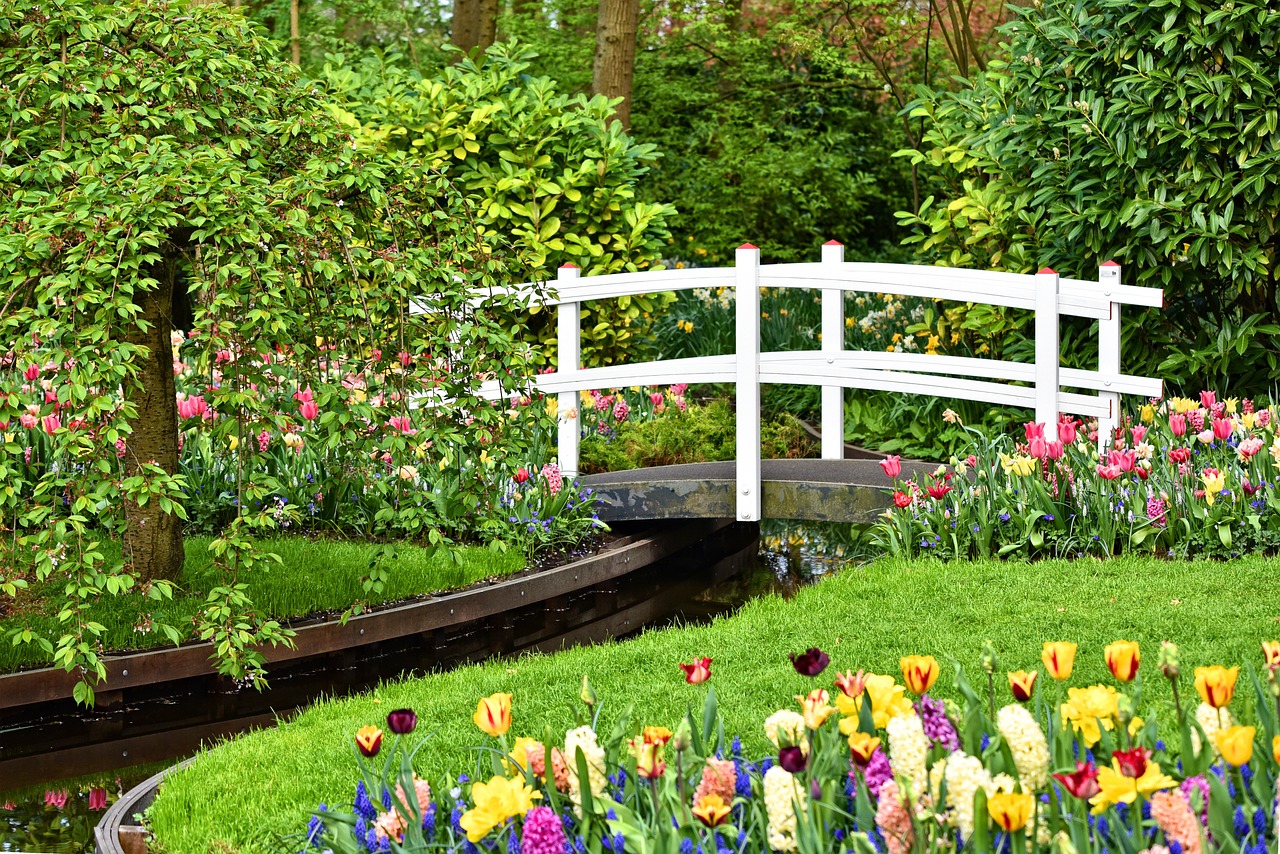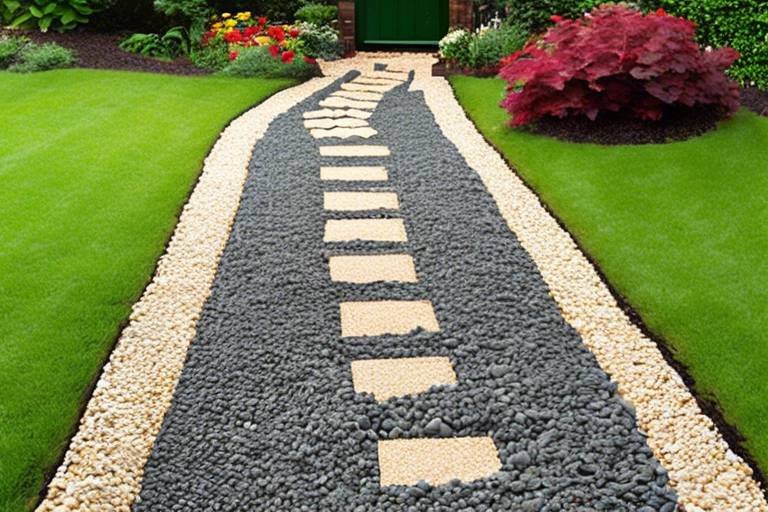How to Design a Sensory Garden for Kids
Designing a sensory garden for kids is a delightful and rewarding experience that can spark their curiosity and foster a deep connection with nature. By engaging all five senses, children can explore, learn, and play in a vibrant outdoor space designed specifically for their enjoyment. A sensory garden is not just a regular garden; it's a magical world where every plant, texture, sound, and smell has a purpose in stimulating young minds and bodies.
When creating a sensory garden for kids, it's essential to consider the diverse needs and preferences of children. From vibrant colors to soft textures, fragrant scents to tasty treats, every element in the garden should be carefully selected to captivate and engage young senses. Picture a garden where children can run their fingers through silky petals, listen to the soothing sound of wind chimes, taste the sweetness of ripe berries, and inhale the fresh aroma of blooming flowers—all in one enchanting space.
One of the key aspects of designing a sensory garden for kids is to ensure that it provides a safe and secure environment for exploration and play. Soft ground coverings like grass or rubber mulch can cushion falls, age-appropriate equipment can encourage physical activity, and clear boundaries can offer a sense of structure and protection. By creating designated play areas within the garden, children can freely roam and discover the wonders of nature without worry.
Moreover, a well-designed sensory garden should not only stimulate the senses but also encourage nature exploration and discovery. By incorporating interactive elements such as water features, stepping stones, and tactile sculptures, children can actively engage with their surroundings and develop a deeper appreciation for the natural world. Imagine a garden where every corner invites exploration and every plant tells a story waiting to be discovered.
As children interact with the sensory garden, they not only engage their senses but also benefit educationally. Sensory gardens have been shown to improve cognitive development, enhance sensory processing skills, promote environmental awareness, and contribute to overall well-being. By providing a hands-on learning experience in a natural setting, children can learn, grow, and thrive in ways that traditional indoor environments may not offer.
To maintain and evolve a sensory garden for kids, it's important to involve children in gardening activities, embrace seasonal changes, and continuously enhance the space to keep it engaging and educational. By nurturing the garden together, children can develop a sense of ownership and responsibility, fostering a deeper connection with nature and each other. Through ongoing care and creativity, the sensory garden can continue to surprise and delight children for years to come.

Understanding Sensory Gardens
Sensory gardens are specially designed outdoor spaces that aim to engage and stimulate all five senses—sight, smell, touch, taste, and hearing. These unique gardens are not only visually appealing but also provide a therapeutic and educational experience for children. By incorporating various elements that cater to different sensory experiences, sensory gardens create a multi-dimensional environment that encourages exploration and learning through nature.
When designing a sensory garden for kids, it's essential to consider the diverse sensory needs of children. From vibrant colors and interesting textures to fragrant scents and edible plants, every aspect of the garden should be carefully selected to captivate young minds and spark their curiosity. By creating a sensory-rich environment, children can develop their sensory processing skills, enhance cognitive development, and deepen their connection with the natural world.
One key aspect of sensory gardens is the selection of plants that offer a range of sensory experiences. From soft and fuzzy leaves to brightly colored flowers and aromatic herbs, the choice of plants plays a crucial role in creating a sensory-rich environment. Children can explore different textures, smells, and tastes, engaging their senses and promoting a deeper connection with nature.
Moreover, sensory gardens often incorporate interactive elements that further enhance the sensory experience. From wind chimes that create soothing sounds to water features that provide a calming effect, these interactive elements add an extra layer of engagement to the garden. Additionally, tactile sculptures and stepping stones offer opportunities for hands-on exploration, encouraging children to interact with their surroundings in a meaningful way.
By understanding the concept of sensory gardens and the benefits they offer, parents and educators can create engaging outdoor spaces that promote sensory exploration and learning for children. Whether it's designing safe play areas, incorporating diverse plant varieties, or encouraging nature exploration, sensory gardens provide a holistic sensory experience that nurtures children's curiosity and creativity.

Choosing the Right Plants
When it comes to designing a sensory garden for kids, choosing the right plants is a crucial step in creating a stimulating and engaging environment. The plants selected should not only appeal to children's senses but also be safe for them to interact with. Colorful flowers, aromatic herbs, and interesting textures can all contribute to a sensory-rich experience.
One approach to selecting plants for a sensory garden is to consider the different sensory experiences they offer. For example, vibrant flowers like marigolds and pansies can provide visual stimulation, while fragrant herbs such as lavender and mint appeal to the sense of smell. Incorporating plants with varying textures like lamb's ear or ornamental grasses can enhance the tactile experience for children.
It's essential to choose plants that are non-toxic and safe for kids, especially if they are likely to touch or taste them. Researching the toxicity of plants and opting for child-friendly varieties can help prevent any potential hazards in the garden. Additionally, selecting plants that are easy to maintain and resilient to local climate conditions can ensure the longevity of the sensory garden.
Another aspect to consider when choosing plants is their seasonal interest. Including a mix of annuals and perennials can provide year-round sensory experiences as different plants bloom and change throughout the seasons. This diversity can keep the garden dynamic and engaging for children, allowing them to observe and interact with nature's ever-changing beauty.
Moreover, incorporating edible plants like strawberries, cherry tomatoes, or aromatic herbs can not only engage the sense of taste but also introduce children to the concept of growing their own food. This hands-on experience can foster a deeper connection to nature and promote healthy eating habits in a fun and interactive way.

Incorporating Interactive Elements
When designing a sensory garden for kids, incorporating interactive elements is key to enhancing their sensory experience and promoting engagement with nature. Interactive elements such as wind chimes, water features, stepping stones, and tactile sculptures can stimulate multiple senses and create a dynamic environment for children to explore.
Wind chimes not only add a musical element to the garden but also provide auditory stimulation as the wind creates gentle sounds. Water features like small fountains or shallow ponds can offer visual interest and the soothing sound of flowing water, inviting children to observe and interact with aquatic life.
Stepping stones can create a playful pathway for kids to walk on, encouraging physical activity and allowing them to experience different textures under their feet. Tactile sculptures made of various materials like smooth stones, rough bark, or soft fabrics can be placed strategically to encourage tactile exploration and sensory discovery.

Creating Safe Play Areas
Creating safe play areas within a sensory garden is crucial to ensure that children can explore and interact with nature in a secure environment. One way to achieve this is by using soft ground coverings such as rubber mulch or artificial grass to cushion falls and reduce the risk of injuries during play. Additionally, installing age-appropriate equipment like low climbing structures, swings, and slides can offer engaging play opportunities while prioritizing safety.
Setting clear boundaries around play areas can help children understand the limits of where they can explore, providing a sense of structure and security. Fencing or natural barriers like hedges can define the play space and prevent children from wandering into potentially unsafe areas. By creating designated play zones, you can also organize the garden layout effectively, ensuring that different activities are separated for easy supervision.
Another important aspect of designing safe play areas is considering the visibility and sightlines within the garden. Positioning play structures and seating areas strategically can allow caregivers to monitor children easily while still giving them the freedom to play independently. Maintaining clear lines of sight throughout the garden enhances safety and promotes a sense of comfort for both children and adults.
When incorporating interactive elements into the play areas, such as sensory pathways or musical instruments, ensure that they are securely installed and free from any potential hazards. Regular inspections and maintenance of these elements are essential to address any wear and tear promptly and uphold safety standards. By regularly checking the condition of play equipment and features, you can create a safe and enjoyable environment for children to play and explore.

Engaging All Five Senses
When designing a sensory garden for kids, it is essential to engage all five senses to create a truly immersive experience. Each sense plays a crucial role in how children perceive and interact with the world around them, making it important to cater to each one in the garden design. By incorporating elements that stimulate sight, smell, touch, taste, and hearing, you can provide a rich sensory environment that sparks curiosity and exploration.
One way to engage the sense of sight is by planting a variety of colorful flowers and plants that catch the eye. Bright hues and contrasting shades can create visual interest and draw children's attention to different areas of the garden. Additionally, incorporating visually stimulating elements such as wind spinners or colorful signage can further enhance the visual experience.
For the sense of smell, consider planting fragrant flowers and herbs that emit pleasant scents. Lavender, mint, and roses are popular choices that not only smell delightful but also provide opportunities for children to learn about different plant aromas. Encourage kids to take a deep breath and appreciate the natural scents around them.
To engage the sense of touch, include a variety of textures throughout the garden. Soft, fuzzy leaves, rough tree bark, smooth pebbles, and prickly succulents offer tactile experiences that invite children to explore through touch. Incorporating touch-friendly elements like a sensory path with different materials can further stimulate this sense.
When it comes to taste, safety is paramount in a sensory garden for kids. Choose edible plants that are non-toxic and child-friendly, such as strawberries, cherry tomatoes, or herbs like basil and mint. Creating a designated edible garden section allows children to taste, smell, and learn about different herbs and fruits in a hands-on way.
Lastly, engaging the sense of hearing can be achieved through interactive elements like wind chimes, water features, or rustling grasses. These auditory stimuli add another layer of sensory experience to the garden, creating a soothing atmosphere that allows children to listen closely to the natural sounds around them.
By designing specific areas in the sensory garden that target each of the five senses, you can create a multi-sensory space that captivates children's attention and encourages them to explore the natural world with all their senses.

Encouraging Nature Exploration
Encouraging nature exploration in a sensory garden is essential for fostering a deep connection with the natural world. By creating spaces that inspire curiosity and wonder, children are encouraged to engage with their surroundings actively. One effective way to achieve this is by incorporating themed areas within the garden that mimic different natural habitats, such as a mini forest, a butterfly garden, or a rock pool. These sections can serve as interactive learning environments, allowing children to observe and interact with various elements of nature up close.
Furthermore, providing opportunities for hands-on exploration is key to igniting a sense of discovery in children. Incorporating elements like magnifying glasses, bug houses, and bird feeders can encourage kids to observe and learn about the diverse flora and fauna present in the garden. Additionally, creating a dedicated space for sensory play, such as a mud kitchen or a sandpit, allows children to engage in messy, tactile experiences that connect them with the earth.
Another way to encourage nature exploration is by organizing guided activities and educational programs within the sensory garden. Hosting nature walks, scavenger hunts, or gardening workshops can spark children's interest in the environment and provide valuable learning experiences. By involving them in hands-on projects like planting seeds, caring for plants, or building birdhouses, children can develop a deeper appreciation for nature and a sense of responsibility towards the ecosystem.
Overall, encouraging nature exploration in a sensory garden involves creating an immersive and interactive environment that stimulates children's senses and curiosity. By offering diverse opportunities for observation, discovery, and hands-on learning, the garden becomes a space where children can connect with nature, learn about the environment, and develop a lifelong love for the natural world.

Educational Benefits of Sensory Gardens
Sensory gardens offer a multitude of educational benefits for children, going beyond just a recreational space. By engaging with the various elements in the garden, kids can enhance their cognitive development, sensory processing skills, and environmental awareness. These gardens provide a hands-on learning environment where children can explore different textures, colors, scents, and tastes, stimulating their senses and encouraging curiosity.
One of the key educational benefits of sensory gardens is the improvement in sensory processing skills. Children learn to process and interpret sensory information more effectively through the diverse stimuli present in the garden. This can help in sensory integration, leading to better focus, attention, and overall sensory regulation.
Moreover, sensory gardens promote environmental awareness and appreciation among children. By interacting with nature firsthand, kids develop a deeper understanding of the natural world and the importance of conservation. They learn about plants, insects, and ecosystems, fostering a sense of responsibility towards the environment.
Additionally, sensory gardens contribute to the overall well-being of children by providing a therapeutic and calming environment. The exposure to nature has been linked to reduced stress levels, improved mood, and increased relaxation. Children can unwind and recharge in the tranquil setting of a sensory garden, benefiting both their physical and mental health.
Furthermore, these gardens offer opportunities for hands-on learning experiences that cater to different learning styles. Whether visual, auditory, kinesthetic, or tactile learners, children can engage with the garden in ways that suit their preferences, making learning more effective and enjoyable.
Incorporating educational activities and lessons into the sensory garden can enhance the learning experience further. From planting and observing growth cycles to identifying different plant species and understanding pollination, children can acquire knowledge about nature in a practical and engaging manner.
Overall, sensory gardens play a vital role in enriching children's education by providing a dynamic and immersive learning environment that nurtures their senses, fosters a love for nature, and promotes holistic development.

Maintaining and Evolving the Garden
When it comes to maintaining and evolving a sensory garden for kids, there are several key considerations to keep in mind. One of the most important aspects is regular maintenance to ensure the garden remains safe, clean, and inviting for children to explore. This can involve tasks such as weeding, watering, pruning, and replacing any damaged plants or elements.
Additionally, involving children in gardening activities can be a fun and educational way to teach them about nature and responsibility. By assigning age-appropriate tasks, children can learn valuable skills while also developing a sense of ownership and pride in the garden.
Seasonal changes present an opportunity to introduce new elements or themes to the sensory garden. For example, planting seasonal flowers or vegetables can add variety and interest to the space, while also teaching children about the natural cycles of growth and change.
Furthermore, ongoing enhancements can help keep the garden engaging and educational for children. This could involve adding new interactive elements, rearranging plantings to create different sensory experiences, or even seeking input from the children themselves on what they would like to see in the garden.
By actively maintaining and evolving the sensory garden, you can ensure that it continues to provide a stimulating and enriching environment for children to explore and learn from.
Frequently Asked Questions
- What age group is a sensory garden suitable for?
A sensory garden is ideal for children of all ages, from toddlers to teenagers. The activities and elements can be tailored to suit different age groups, ensuring that all children can benefit from the sensory experience.
- Are sensory gardens only beneficial for children with special needs?
No, sensory gardens are beneficial for all children, including those with special needs. The interactive and stimulating environment can help children develop their senses, cognitive skills, and emotional well-being, making it a valuable experience for every child.
- How can parents get involved in maintaining a sensory garden?
Parents can get involved in maintaining a sensory garden by participating in gardening activities with their children, monitoring the garden for safety, and helping with seasonal changes and enhancements. It can be a fun and educational experience for the whole family.
- Can a sensory garden be created in a small space?
Yes, a sensory garden can be created in a small space, such as a backyard, balcony, or even indoor area. By carefully selecting plants, interactive elements, and play areas, a sensory garden can be designed to fit any size space while still providing a rich sensory experience for children.
- What are some common plants used in sensory gardens?
Common plants used in sensory gardens include lavender for its calming scent, sunflowers for their bright colors, lamb's ear for its soft texture, mint for its refreshing aroma, and strawberries for their sweet taste. These plants engage multiple senses and are safe for children to interact with.



















